Legacy Fatale: The Performance Collective Raising Feminist Awareness Through Art, Nature and Ties to Ancient History and Politic of Resistance
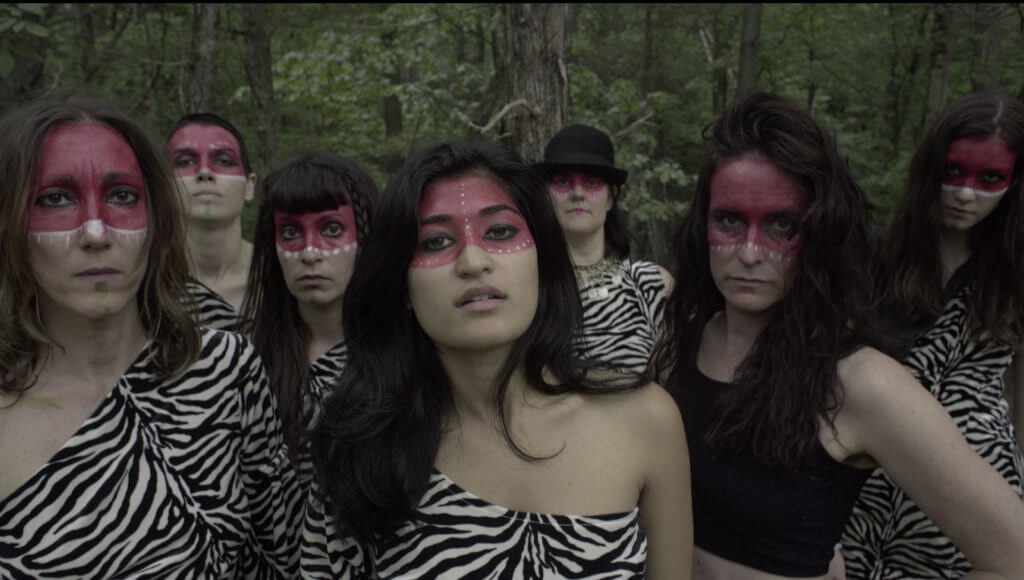
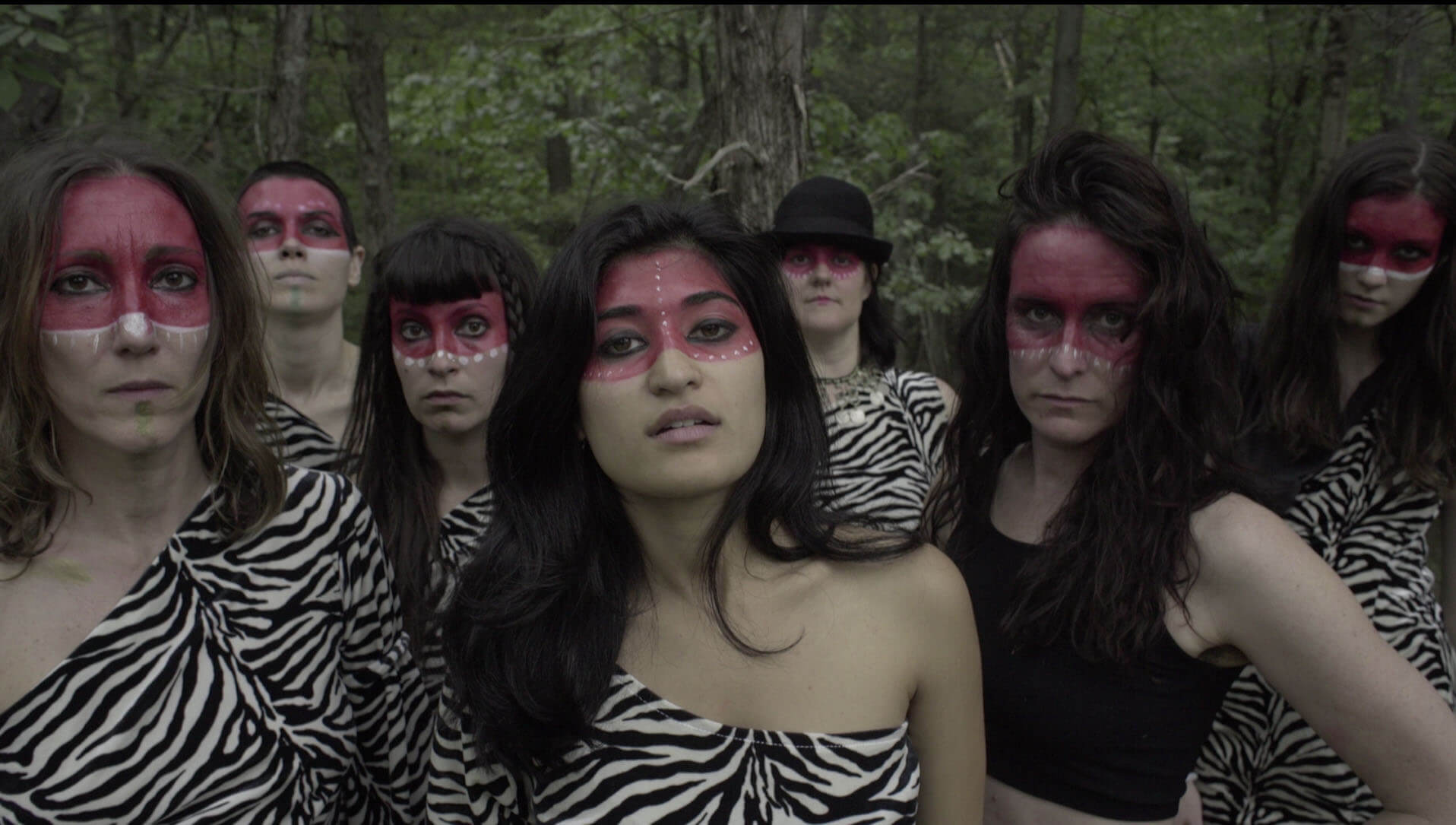
Artist, founder and director Coco Dolle’s Legacy Fatale takes you on a spiritual journey using nature, art and performance as instruments to raise feminist consciousness.
Meet Legacy Fatale: a performance project that revisits age-old practices of feminism and mysticism through dance and movement. Bridging nature, art and feminism, the group references ancient cultures that date back to the Paleolithic ages around 500 B.C., specifically taking the form of Amazon Women Warriors.
From ceremonial happenings to site-specific choreography to art installations, Legacy Fatale’s work ranges however its pursuits are strongly committed to its historical Paleolithic ties. The core focus of the intercultural, feminist project is to empower female leadership and revisit ancient concepts of feminism and the female legacy of women’s subjection to patriarchal domination. And while gender equality is a hot topic today, Legacy Fatale’s mission is not geared towards today’s political climate and instead is “a spiritual quest for existential means,” the collective’s founder Coco Dolle shared with us. “Female leadership isn’t a social achievement [but] an educative tool. Legacy Fatale is an inter-generational concept that needs to breathe outside of constructed social systems.” In that respect, the Legacy Fatale project is an active artist-in-residence with the Rosekill International Performance Residency in upstate New York.
However, born in New York City from the mind of artist Coco Dolle, the project hosts a variety of performances and events across the state of New York, involving a diversity of performers, dancers, artists and healers of all ages. Its most recent performance, “TALES: The Shadow Proses,” which took place at the Rosekill estate in May, was of “feminine divine darkness” incorporating old and new prose. Inspired by the book Women Who Run With the Wolves and the writings of strong female figures, Adrienne Rich, Rupi Kaur and Maya Angelou, the group parades through the estate and dances in front of fire using paint and zebra patterns as historical symbols and artistic tools.
In 2016, Legacy Fatale held its first performance at Rosekill, “Blood to the Moon,” a ritualistic parade where the collective performed rites of passage, chanting the Legacy Fatale mantra of “heart, earth, universe, love” and using natural and biological elements to symbolize various aspects of feminism (watch the performance here). Another upcoming work by the group is its work-in-progress short film, “HERd,” Scheduled to debut in 2020 (watch the trailer here).
We spoke to Coco Dolle to learn more about Legacy Fatale, its projects and the group’s unique approach to feminism.
How did Legacy Fatale get started and what sparked the idea?
It started as I was mapping my yearly performances for the Annual Deitch Projects Art Parade in 2008. At the time, Jeffrey Deitch was [a] leader [of] the New York avant-garde art scene and I was thrilled to be a participating artist (2006-2008).
My interest was taking cues in art history and mythology. I had been looking for a theme that would encompass a wider spectrum [of] female iconography so when I stumbled [upon] a PBS documentary on the nomadic Amazon Warrior Women by American Archeologist Jeannine Davis-Kimbally, I got into an existential trance. I became fascinated with her discovery: She scientifically proved that this tribe of Warrior Women actually existed as prominent leaders in nomadic societies when there was no evidence in history [or] art that these women had any particular status, because simply history [had] always been written by men.
From then on, I focused my entire performance practice towards the gathering of these ‘unknown’ Amazons*, trying to find their traces in the DNA of my contemporary female peers, dancers, artists, healers [and] teachers. Unlike their given myth, I don’t believe an Amazon is a hater of men, I am interested in women who participate in the greater shift of the world’s consciousness via their art, teachings [and] lifestyle.
The Legacy Fatale project debuted in 2008 at the Deitch Art Parade and [then] traveled to Fountain Art Fair Miami Art Basel. That’s how Legacy Fatale was born.
The term Amazon takes origins in Europe and not in Brazil as we commonly associated it with – its River and forest were named in honor of these Greek Women Warriors by the Spanish Conquistadors when they witnessed the local female natives fighting like their men.
Tell us about your nature-based performances “Blood to the Moon” and “TALES: The Shadow Proses” and upcoming short film “HERd.”
“Blood to the Moon”, “TALES: The Shadow Proses” and “HERd” are all site-specific performance projects related to our annual artist-in-residence with the ROSEKILL International Performance Residency [in] upstate NY. Legacy Fatale has been an on-going resident since 2015 with the sister compound of Grace Exhibition Space in Bushwick.
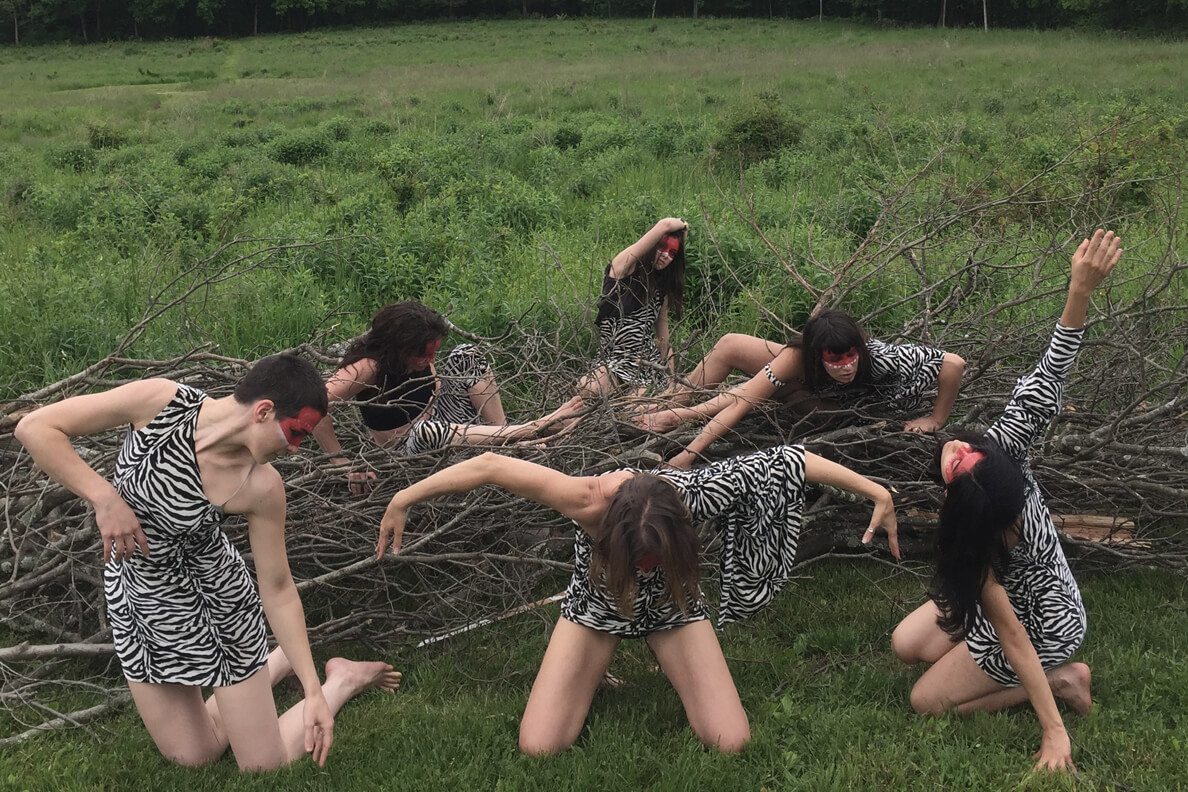
“Blood to the Moon” was the collective’s first performance at Rosekill last year. Can you walk us through the processions performed?
“Blood to the Moon” is an invocation honoring the spirit of the land. We walked through the estate in a ceremonial procession inviting the public to follow us. The mantra, “Heart/Earth/Universe/Love,” is inspired by the Isadora Duncan teachings [of] universal harmony. The marking of the warrior calls upon traditional rites of passages performed in native and folkloric communities; the blessings by the lake [are] a reverence to our menstrual cycles; the little walk of laughter is a metaphoric dance for euphoria; the Wishing Tree is setting intentions with our unconscious world.
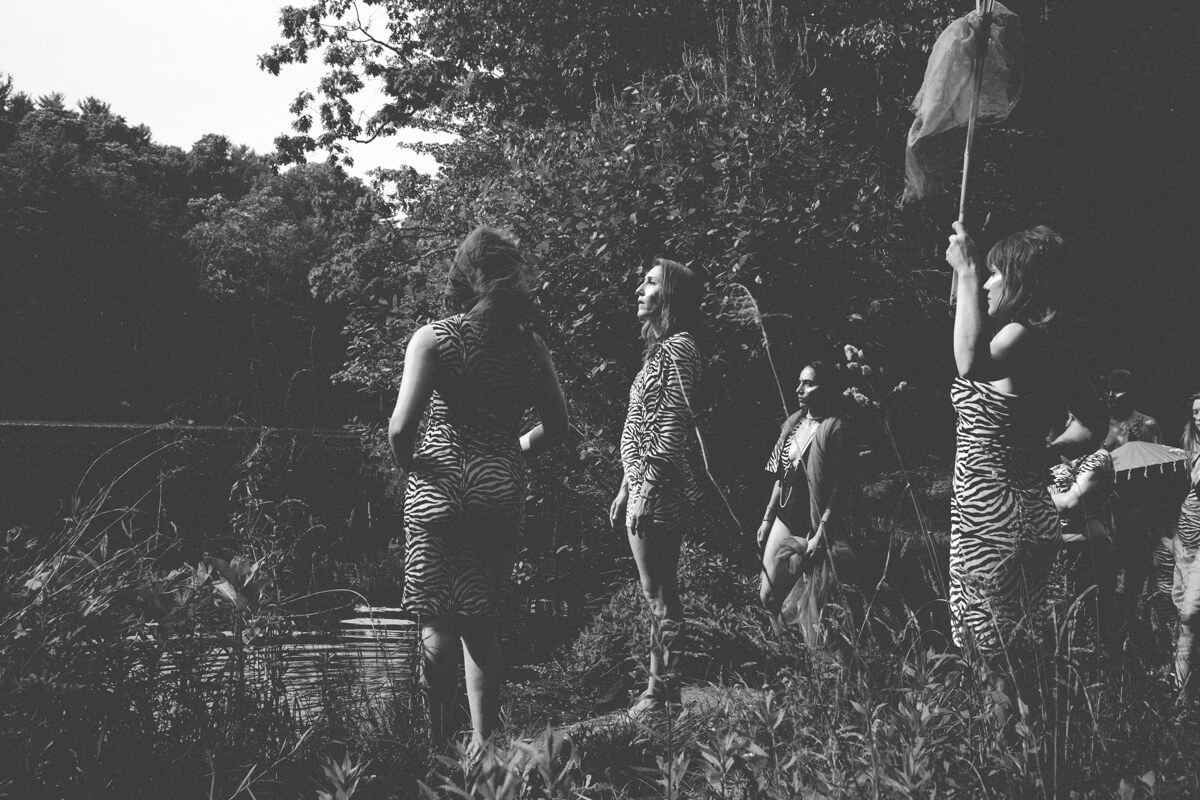
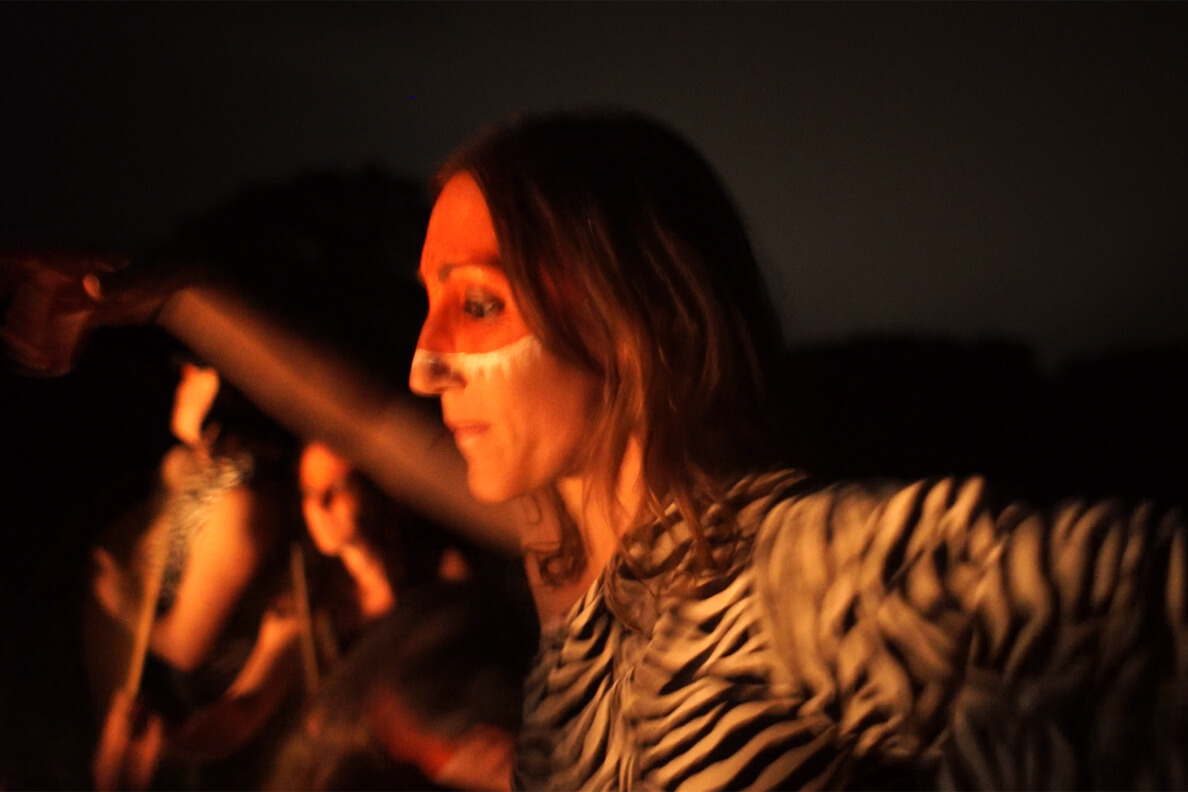
Tell us about Legacy Fatale’s most recent performance, “TALES: The Shadow Proses.”
“TALES: The Shadow Proses” is inspired by the book, Women Who Run With the Wolves. It is a journey of transformation — a quest for a deeper meaning in life. The woods are a metaphor for a mystic density. If you don’t look deep inside yourself, you might miss your true nature. A shadow prose is a term used in acting: hearing a spoken word and repeating it back with as little delay as possible. I believe women need to revisit old tales and writings, and share them in order to get in touch with our profound nature. [The performance] reference[d] various writings from ancient and new prose: Adrienne Rich’s text is an iconic text symbolizing of a rebirth, read by Roxanne, a holistic sexual psychologist; “Milk and Honey” by Rupi Kaur reads upon the freedom of women’s voice[s] within the confinements of our private spaces, read by Ambreen, an English teacher and spiritual seeker; “Phenomenal Woman” by Maya Angelou was performed by Heather, a local performance artist and activist.
The projects are hybrids of art forms, including music, dance and poetry. What is the creative process?
I design and choreograph piece[s] inspired by the location[s]. Once the source of the inspiration has come, I invite participants to bring their own voices. My choreography references a variety of sources, [from] Isadora Duncan’s free modern dance philosophy to contemporary concepts by Simone Forti to the spirit of Butoh.
The paint takes reference [to] the practice of marking the body. It is a tribal element in Legacy Fatale, connecting with ancient gestural rites of passage from various folklore, culture and continents. [It] helps the performers transcend the domesticity of the non-creative state into an outer body experience, disassociating from the ego while connecting to the spirit of the group and the unknown.
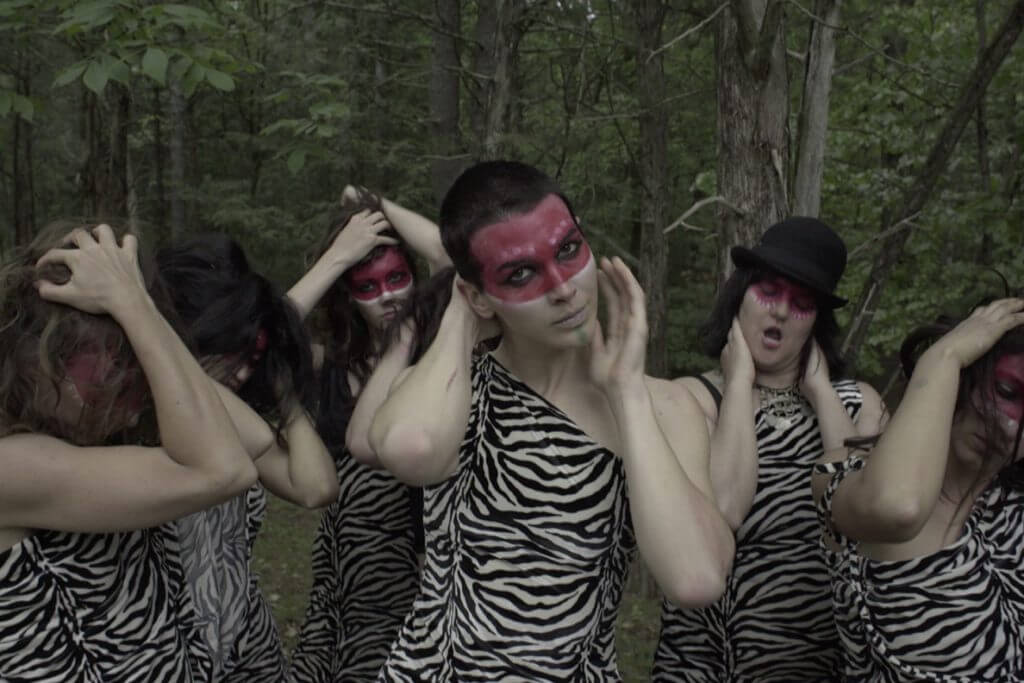
The animal print costumes are a direct visual reference to both the zebra herd and the iconography of the femme fatale, the vamp, the wild woman, the one who embodies self-confidence. I like the zebra pattern for its dual element of being, female/male, dark/light, yin/yang, movement/stillness. Additionally, the zebra pattern in the wild has been studied by zoologists and proven to act as an optical illusion that confuses a predator during the chase. Additionally, this phenomenon resonates with the Legacy Fatale mission as a statement against predatory behavior in society. We intend to show that the female is not pray to be hunted and consumed, granted our nature as human beings and natural hunters.
Why do you specifically channel the ancient spirits of female Greek Amazon warriors, rather than another independent, female leader-type? What is their connection to political activism?
The mystery surrounding their existence and their iconic status as symbols of female empowerment appealed to me. They [are] a myth that continues to fascinate our contemporary culture — the super hero “Wonder Woman” is a direct descendant of the Queen.
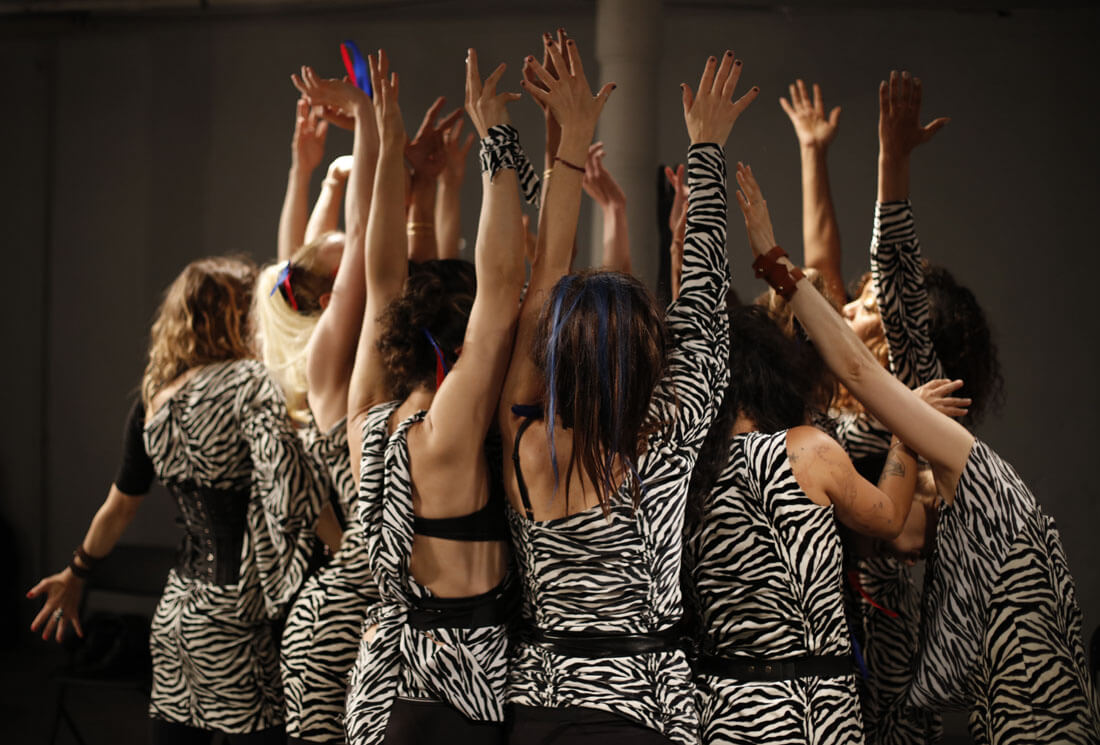
[Our] “March of the Women” and the “Lasso of Truth” performed at the 21st Suffragettes Festival at Grace Exhibition Space explores the rise of female power through historical action activism. The Suffragettes Movement takes reference to these warriors in their fierce political activism. Specifically, it is the mix of the mystic and the political activism that interest me in this archetype. Marching and protesting enables us to vocalize [our] intentions and position ourselves in a non-violent form. Legacy Fatale offers any and all aspiring Amazons a voice in a conversation historically dominated by the patriarchal oppression and structural power of religion, consumerism and politics.










Responses